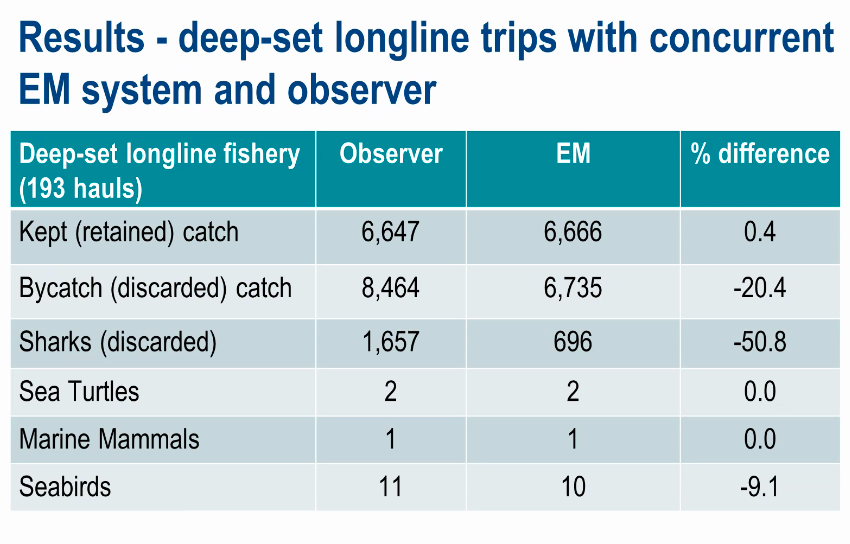Whether Hawai‘i longliners are fishing for bigeye tuna or swordfish, they must limit their interactions with federally protected species or face a partial or complete closure. False killer whales and loggerhead and leatherback sea turtles have been the main species of concern over the past several years, but the relatively recent listing of oceanic whitetip sharks as threatened could also lead to fishery closures, depending on what kinds of regulations the National Marine Fisheries Services adopts to protect the animals.
Federal observers are required on all Hawai‘i longline vessels targeting swordfish, and on 20 percent of vessels targeting tuna. Cetacean expert Robin Baird and others have called for electronic monitoring on all vessels to ensure that crews actually handling false killer whale interactions do so in ways that reduce or eliminate mortalities or serious injuries. Observers have witnessed captains and crews often cutting hooked whales free with trailing gear streaming from their mouths. Baird suggests the same may be happening regularly on vessels that don’t have observers on them.
Electronic monitoring is being tested and implemented in several fisheries in Alaska and along the east and west coasts.
At the council’s March meeting, Keith Bigelow of the Pacific Islands Fisheries Science Center presented results from electronic monitoring trials on 18 vessels in the Hawai‘i longline fleet that began in 2017.
Video from two cameras on each vessel was only taken when lines were being hauled.
While the reviewers of the camera footage were able to identify targeted catch, sea turtles, marine mammals, and seabirds with about the same accuracy as on-board observers, the cameras and/or reviewers missed about half the sharks that observers saw, as well as a significant portion of discarded bycatch species, such as lancetfish.

Bigelow explained that the reason cameras weren’t picking up the sharks is because crews were not always bringing the animals into view. He added that this year they plan to conduct a catch handling study in which sharks are brought closer to the camera’s field of view.
While the data are promising, NMFS Pacific Islands Regional Administrator Mike Tosatto had a number of concerns about electronic monitoring. First, NMFS can’t require it if associated expenses are unfunded or unsustainable.
With onboard observers, “we have zero data transmission cost now,” he said.
He added that the council needs to know whether electronic monitoring is funded and sustainable before it makes recommendations to NMFS on whether or not to require this.
Bigelow argued that the recent study suggests that electronic monitoring would cost $50,000 less than onboard observers.
Even so, Tosatto was not sold. He expressed his concern about the sharks being kept out of the cameras’ field of view and the inability to identify lancetfish, which he pointed out don’t look anything like tuna.
If certain species aren’t being brought into the field of view, Tosatto said, “I would have to assume —and I don’t like to assume, because you know what that makes me — it was something not wanted to bring into the field of view. It’s a shark or a turtle. That’s less beneficial than having a human identify it. I have to rely on the actor acting well. … I need to see the identity of those sharks.”
Bigelow countered that the protected species were pretty well documented by the cameras. “We missed one marine mammal. We missed one turtle,” he said.
The council’s Scientific and Statistical Committee chair Jim Lynch pointed out that the fishery was willing to bear some of the cost. While there is a concern about the potential for having too much electronic equipment on deck, he said the committee thought electronic monitoring should be made mandatory.
— Teresa Dawson

Leave a Reply